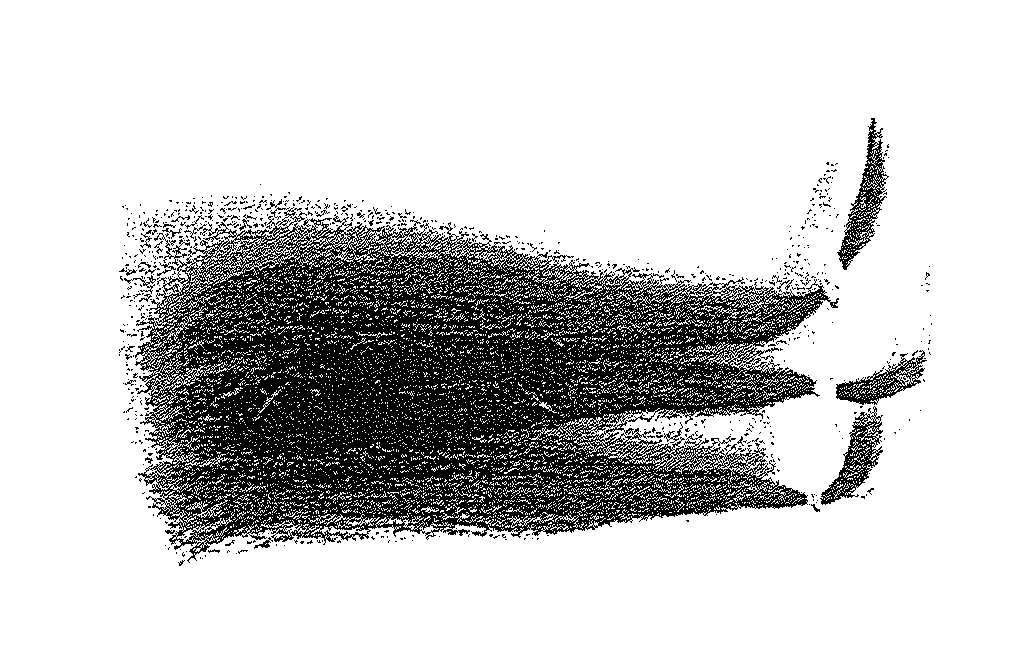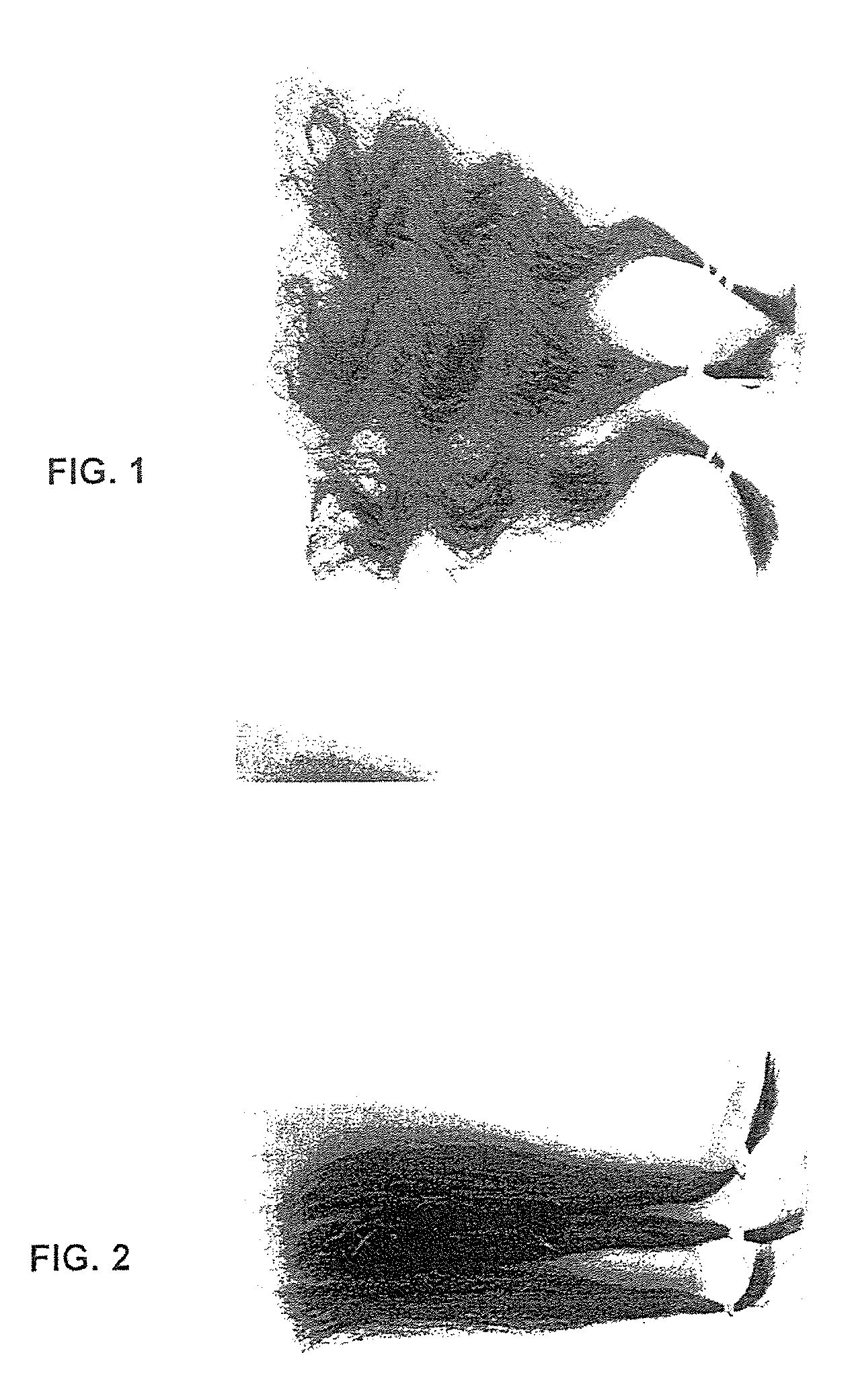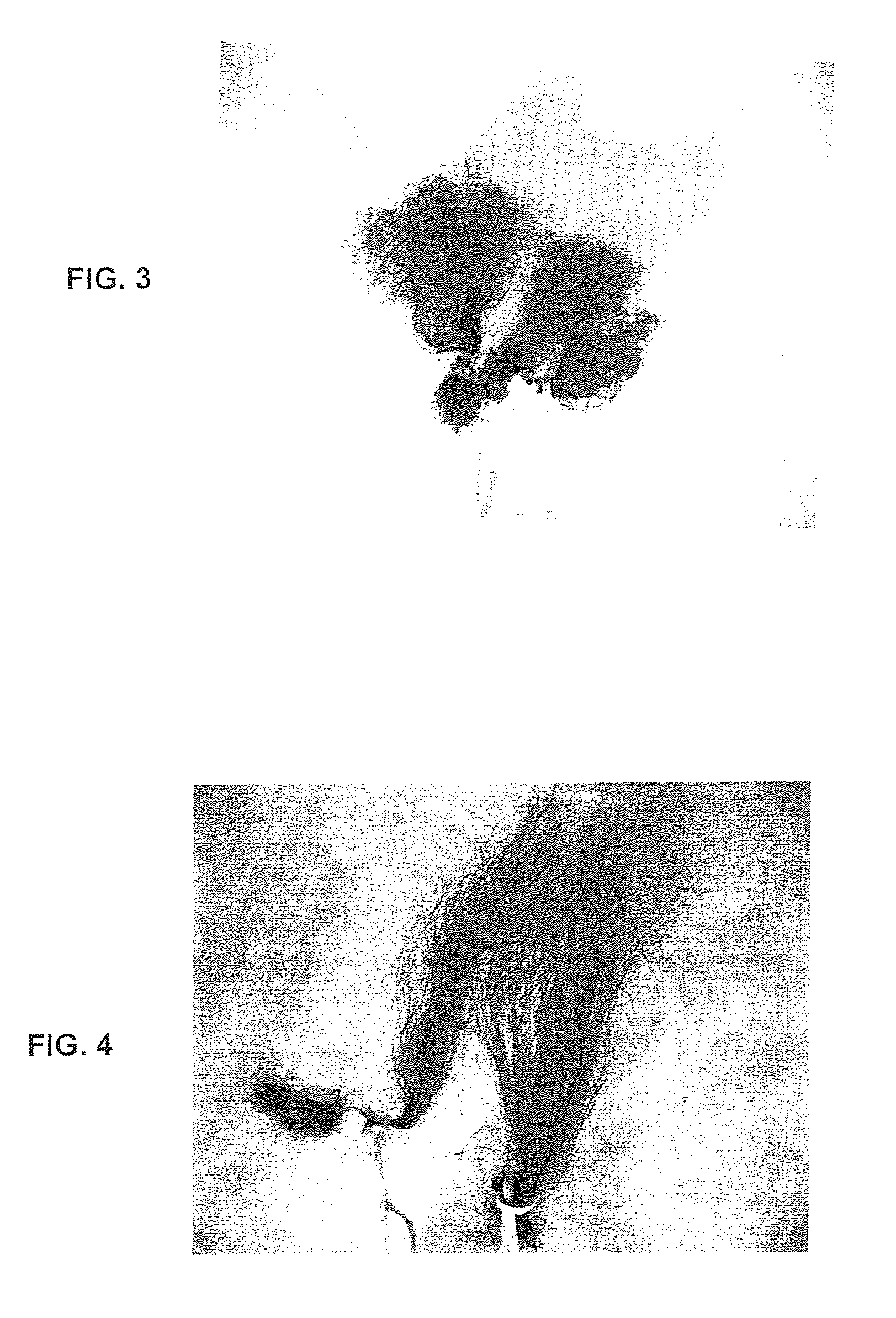Enzymatic hair relaxing and straightening
a hair and hair technology, applied in the field of hair relaxing and straightening, can solve the problems of hair loss, hair tensile strength loss, hair cosmetics, etc., and achieve the effects of relaxing or straightening permanent hair, reducing curling, wave and/or kink, and minimal loss of hair fiber tensile strength
- Summary
- Abstract
- Description
- Claims
- Application Information
AI Technical Summary
Benefits of technology
Problems solved by technology
Method used
Image
Examples
Embodiment Construction
[0017]Hair is a complex tissue consisting of several morphological components, with each component consisting of several chemical species. Human hair is composed of approximately 65%-95% protein, with the majority being keratin. The remaining constituents are water, lipids (both structural and free), pigment (pheomelanin or eumelanin) and trace elements.
[0018]The hair fiber is a cylindrical, keratinized, often pigmented filament. The hair fiber is composed of three parts. From outermost to innermost, the parts of a hair fiber are; the cuticle, the cortex, and the medulla (only present in large terminal hairs, i.e. hairs greater than about 60 microns in diameter).
[0019]The cuticle layer of the hair consists of clear, colorless overlapping imbricated cells, akin to shingles on a roof or scales on a fish. These cells are cemented to one another via the action of lipids, the predominant one being 18-methyl eicosanoic acid, and to a lesser extent ceramides and cholesterol. The main funct...
PUM
| Property | Measurement | Unit |
|---|---|---|
| diameter | aaaaa | aaaaa |
| temperature | aaaaa | aaaaa |
| pH | aaaaa | aaaaa |
Abstract
Description
Claims
Application Information
 Login to View More
Login to View More - R&D
- Intellectual Property
- Life Sciences
- Materials
- Tech Scout
- Unparalleled Data Quality
- Higher Quality Content
- 60% Fewer Hallucinations
Browse by: Latest US Patents, China's latest patents, Technical Efficacy Thesaurus, Application Domain, Technology Topic, Popular Technical Reports.
© 2025 PatSnap. All rights reserved.Legal|Privacy policy|Modern Slavery Act Transparency Statement|Sitemap|About US| Contact US: help@patsnap.com



